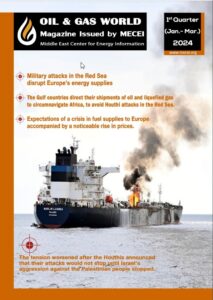KOTC Takes Delivery of Massive Gas Tanker

On Tuesday, 10th of March 2020, the Kuwait Oil Tanker Company (KOTC) received the huge LNG carrier “Umm Al-Ruwaisat” as part of a comprehensive overhaul of the company’s fleet, according to the Kuwait News Agency (KUNA).
The carrier has internationally approved specifications. The tanker load capacity is 84 thousand cubic meters, with a 228.45 meters length, 36.6 meters width, 22.55 meters depth, up to 11.9 meters draft, and a speed of 16.8 knots per hour.
The CEO of the company, Ali Shihab, told KUNA that the company has entered the fourth stage of repairing its fleet, which includes the delivery of eight tankers of different sizes and types, including three liquefied gas tankers of the category VLGC-LPG, and added that the company now owns 28 tankers of various kinds.
The company had received in January 2020 the “Ahmadiyya” tanker with the same capacity as “Umm Al-Ruwaisat”, and in November 2019 it had received the “Al Mubarakiya” tanker, and thus the new tanker will be the third of the LNG tankers that were built according to modern international standards, and the tanker has been received And name it after conducting all marine experiments on it and ensuring its efficiency in sailing, as it took about a year to build it.
According to the company’s statements about its fleet modernization plan for 2021, it aims to significantly increase the oil and gas production vessels based on the needs of KPC.
It is noteworthy that the company mainly participates in the ownership and management of oil tankers operating in the transportation of crude oil and petroleum products, as well as operating a branch of the marine agency, and is considered the transportation arm of the Kuwait Petroleum Corporation. One of the company’s priorities is to reduce operating costs and replace old ships in the proper time, which is reflected in Company revenue.
The company owns 10 tankers of oil products, and 10 other crude oil tankers, the last of which was received at the end of 2014, in addition to two fuel tankers, while the total number of liquefied gas tankers becomes 5 tankers so far.












